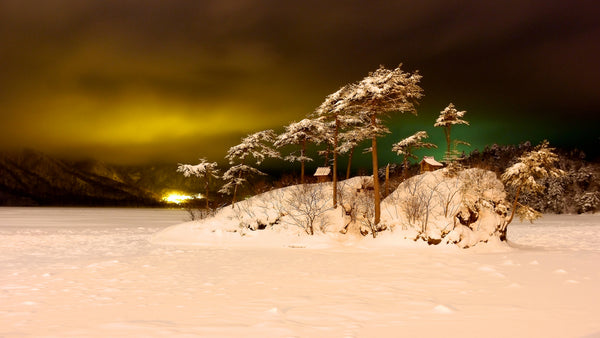Your Cart is Empty
Free Shipping on All Subscriptions Worldwide

Tokyo and Kyoto might get all the press, but to truly experience the essence of Japan, you need to get to the countryside. Each village, region, and island is very different from the next, with their own unique culture, food, and scenic beauty.
In part two of this multi-part post (see part 1 here), we’ll continue to explore places in northern Japan which have officially been named “The Most Beautiful Villages of Japan.” As a recap, 日本で最も美しい村連合(Nihon de mottomo utsukushii mura-rengō)or “The Association of The Most Beautiful Villages in Japan” was established in 2005 to help conserve and enhance the Japanese rural heritage. Along with the Japanese government, they officially recognize the following places as areas of extreme cultural importance and beauty.
Kosaka (小坂町)
Nestled in the mountains of prefecture, this town has a population of 5,749 and borders the Hachimantai National Park. Much of the town is covered in forests and due to its location in the mountains, they get some of the heaviest snowfall in Japan. In ancient times, the area was mined for gold and silver, but ever since the depletion of the mineral deposits they have reverted back to an agricultural based economy.

© ChrisLewis

© PSIroIro

© MooniesWorld

© Wallace
Higashinaruse (東成瀬村)
This town experiences some of the largest seasonal temperature fluctuations in Japan, with hot humid summers and extremely cold winters. The town has a population of 2,759 and is nestled in the mountains, which are known for its geothermal activity.

© Enhana


© SyuzoTsushima
Okura (大蔵村)
A town where you can still see snowfall until July, this town regularly gets over 4 feet of snow in a single day. However, because of the snow, they have some of the cleanest waters in Japan, making it an ideal place for sake production. There are also great hot spring resorts nearby. This town has a population of 3,541.



© HideyoRyoken
Iide (飯豊町)
Iide is one of the larger towns on this list, with a population of 7,558. It is situated at the bottom of the Tohoku alps, so the clear waters streaming from the mountains have made this region ideal for agriculture. Because of this, rice from Iide is considered some of the best.


© Yukimomiji

Iitate (飯舘村)
Located in the Fukushima prefecture, this town had a population of 5,909. Unfortunately, being only 19 miles from the nuclear power plant disaster, much of the town has since evacuated. Only around 100 residents, mostly elderly, remain in the town today. Before the disaster, Iitate was known for its agriculture and prized Japanese Black Wagyu “Iitate Cow.”


© HidetoshiYamada


© HiroyukiFujikawa
Kitashiobara (北塩原村)
With a population of 2,952, this town (also located in Fukushima) sits on the ancient Aizu trade highway. The trade route was crucial for transporting rice, gold, and silver from northern Japan to Edo (modern day Tokyo). However, with the eruption of Mount Bandai in 1888, the highway and ancient castle were destroyed. But the eruption also created a beautiful natural landscape, including Lake Hibara and the Oguni-numa swamp (both deemed a national natural monument by the Japanese government).

© MiyamotoY

© TakahiroUsui

© SasakiMakoto

© PeacefulJPScenery

© MrEven

Check out other amazingly beautiful places in Japan:
Comments will be approved before showing up.